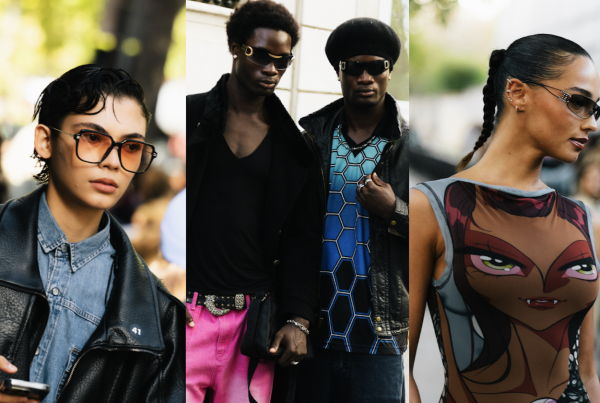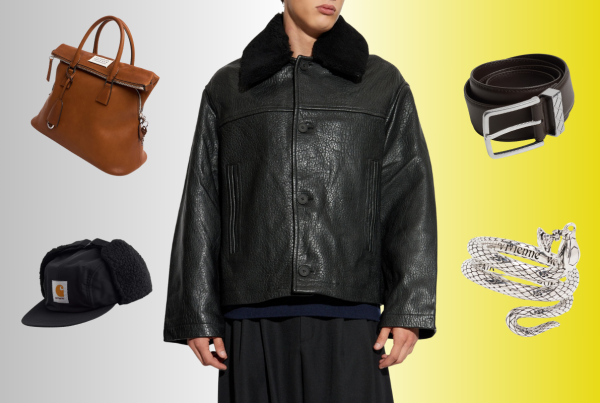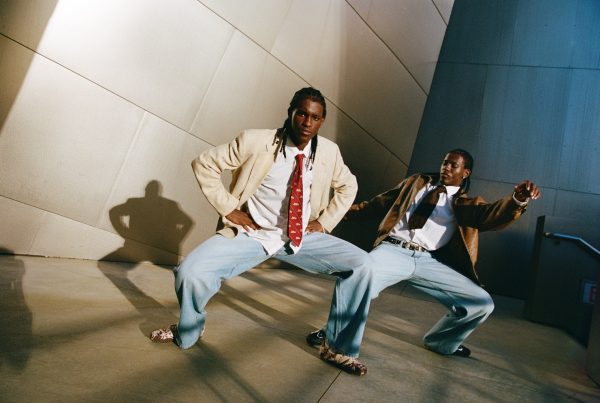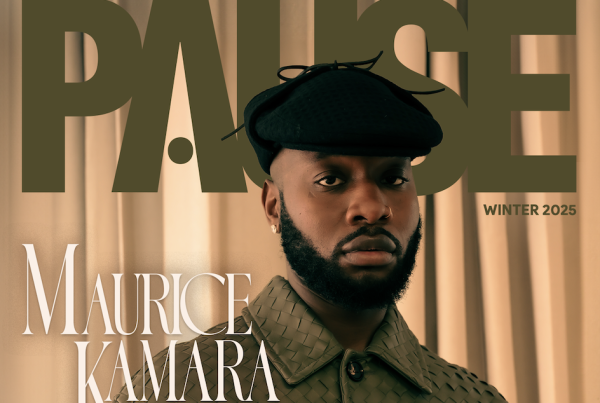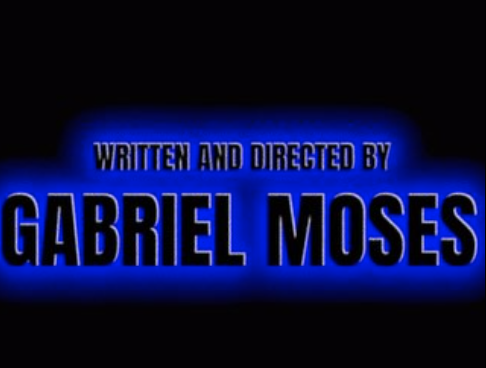A Visionary Trailblazer.
Twenty years ago, the release of Southernplayalisticadillacmuzik (1994) signalled OutKast’s arrival, with it not merely being an album, but a declaration that Southern hip-hop had a new standard-bearer. André 3000, born André Benjamin, emerged as not just a musical innovator but as one of the first non-conventional and non-conforming figures of hip-hop. His sartorial choices were as striking as his lyrical wordplay, introducing a level of sophistication and elegance that had not been commonly associated with the genre at the time. The oversized baseball jerseys, jeans, and a grey fur Kangol in the “Player’s Ball” video set André’s ’90s rapper uniform apart and foreshadowed the experimental journey ahead, with this debut marking the genesis of a style odyssey that would see André evolve from a Southern hip-hop sensation to a global fashion icon.
As hip-hop fans across the globe vibed to OutKast’s music, André 3000’s fashion choices signalled an intentional departure from the norms of the East Coast/West Coast rap agenda. OutKast’s debut look, rooted in Atlanta’s Southern vibe, featured Atlanta Braves merchandise, baggy t-shirts, single gold chains, and country gentleman hats. This aesthetic was a distinct contrast to the oversized layering of East Coast rappers and the bandanas and knee-high socks popularised by their West Coast counterparts. André’s early style was direct, an approach that subtly hinted at the rebellious spirit that would characterise his fashion choices in the years to come.
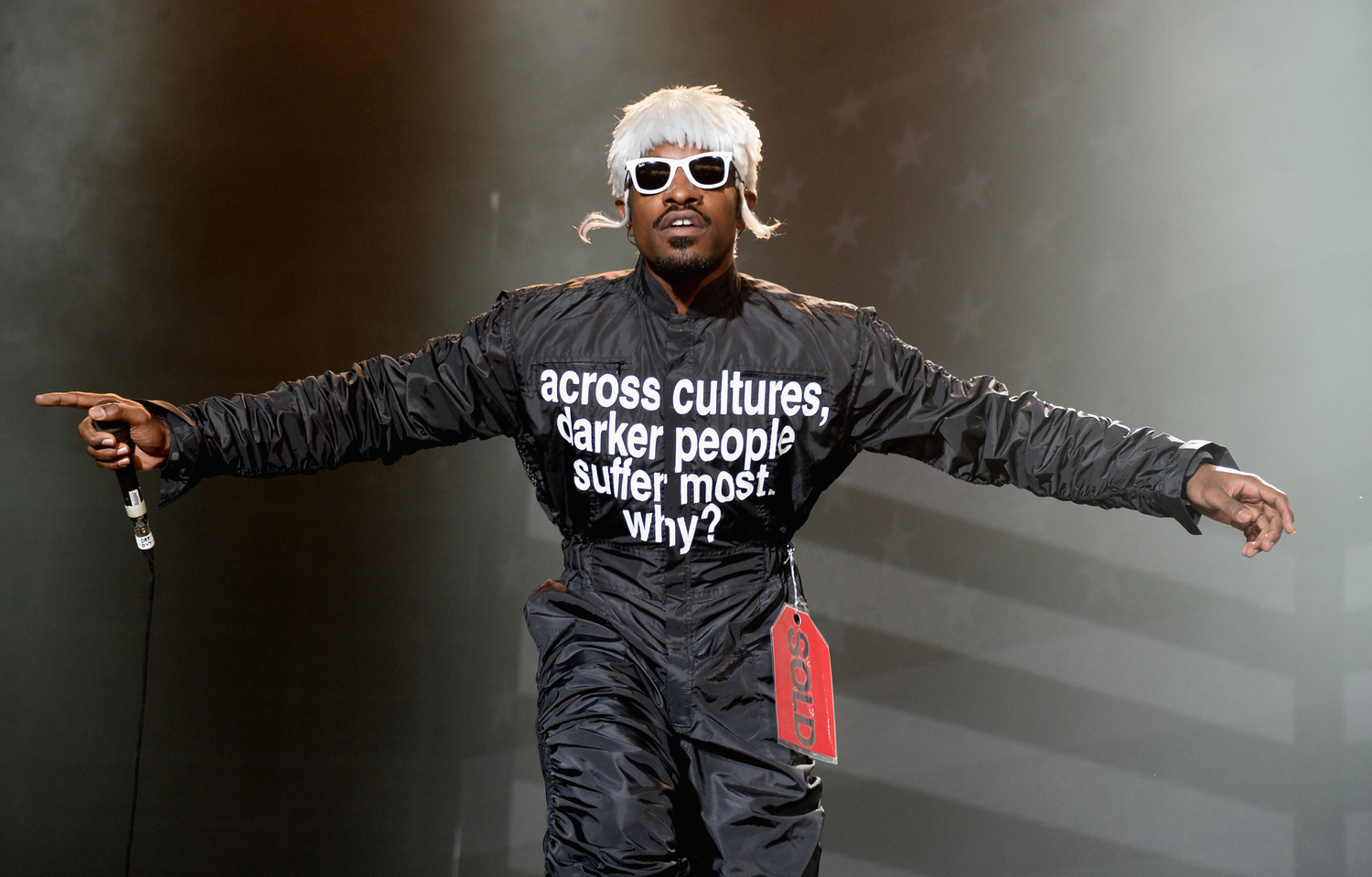
Image Credit: Theo Wargo/Getty Images
Then:
Marking a shift not only in musical soundscapes but also in fashion aesthetics, ATLiens (1996) witnessed André 3000 don turbans and dashikis, departing from the Atlanta Braves merch that defined their debut look. This period marked a conscious effort to carve out a distinctive visual identity that went beyond regional affiliations, embracing a global perspective.
By the time “Aquemini” graced the airwaves, OutKast was staking their claim in the grand tradition of Southern flamboyance. In the “Da Art of Storytellin’” video, Big Boi emerged with permed hair, somehow making a style 20 years old feel fresh. In “Skew It on the Bar-B,” André 3000 sported a blond wig, furry pants with matching cuff links, and snow boots. These choices weren’t just about aesthetics; they were a deliberate playfulness, a statement of self-awareness that challenged the often serious and stoic personas of their contemporaries.
A sonic and sartorial revolution, Stankonia (2000) not only marked a musical evolution but also a pivotal moment in André 3000’s style journey. The hit quadruple-platinum status album featured hits such as “Hey Ya!” and “Ms. Jackson,” and showcased OutKast’s ability to captivate mainstream audiences while maintaining their artistic integrity. During this time, André 3000’s style choices would become more pronounced, challenging the pre-conceived notions of how hip-hop artists should visually present themselves.
This period saw André 3000 fully embracing his role as a fashion maverick as his outfits became statements, thus blurring the lines between genres and challenging the status quo. Whether it was the flamboyant and colourful ensembles on stage or the carefully curated looks in music videos, André’s fashion became an integral part of OutKast’s overall identity. Stankonia not only solidified their musical prowess but also established André 3000 as a style icon, setting the stage for the eclecticism that would define his later choices.

Image Credit: Getty Images

Image Credit: Shutterstock

Image Credit: Getty Images

Image Credit: Getty Images

Image Credit: Getty Images

Image Credit: Shutterstock
Now:
As OutKast’s star continued to rise, critics grappled with the duo’s contrasting styles, particularly the division between André 3000 and Big Boi’s style choices. Big Boi, exuding Southern cool with flamboyant hairstyles and vintage sports jerseys, stood in stark contrast to André 3000’s experimental and avant-garde fashion choices.
Unable to think outside of hip-hop style parameters, cultural commentators dominating the 2000s music scene found it challenging to dissect OutKast’s style. The duo’s deviation from conventional norms in both music and fashion was hard to categorise. In a 2017 interview with GQ, André 3000 addressed the misconceptions about his image, highlighting the difference between public perception and his true, multifaceted self. The rapper, who is heralded as one of rap’s best lyricists refuses to be categorised and this refusal to conform to narrow boxes has become the hallmark of André’s style and persona.

Image Credit: Frederick M. Brown/Getty Images.
OutKast’s fashion narrative transcended the clothing choices that dominated at the time. It became a celebration of Southern style and a visual representation of the multifaceted Black American experience. Profiling America’s Southern hospitality, with their carefully curated looks, André 3000 and Big Boi continuously set themselves apart by rebelling against what rap culture said was the style of the day. Instead of baggy jeans and a triple XL t-shirt, André’s style weaved together elements of Southern culture, humour, and societal commentary.
An example of this is the custom black nylon jumpsuits detailed with powerful proverbial phrases such as “Children of the Cornbread” or “god. or god?”. This unique marrying of fashion and activism personified André 3000’s commitment to using his influence for social change, a commitment that resonates with both the contemporary ethos of the hiph-hop genre and the fashion industry. This eclectic blend reflected the diverse influences of his Atlanta roots, breaking free from the constraints of regional stereotypes. André 3000, in particular, used his fashion choices to speak truth to power, challenge assumptions and celebrate the complexities of Black identity while building a stellar CV as one of hip-hop’s best-dressed.

Image Credit: Tim P. Whitby/Getty Images

Image Credit: Kevin Winter/Getty Images
André 3000 is an enduring figure, transcending generational boundaries. Supreme, an arbiter of New York cool, recognised his cultural significance by choosing him as the face of their lookbook. This collaboration solidified André’s place in the pantheon of American pop culture, showcasing how his influence has extended far beyond the Southern roots that initially defined him.
André’s impact doesn’t stop at mere fashion accolades. Injecting a refreshing blend of humour, self-awareness, and authenticity into an industry that often took itself too seriously, his visual presentation stood as a testament to the power of embracing one’s true self. André’s playful experimentation served as a reminder that style should be a celebration of personal expression rather than a conformity to predetermined norms. As the hip-hop scene struggled with identity politics, André 3000 emerged as a beacon of authenticity, unapologetically steering their course through the sea of masculinity that often characterised the era.
André 3000’s influence on hip-hop’s fashion remains unparalleled. His unwavering commitment to individuality and the enduring influence he has had on the intersection of music and fashion echo through the new generation of hip-hop artists. From Southernplayalisticadillacmuzik to his latest solo effort, New Blue Sun (2023), each outfit tells a story – a story of individuality, activism and a refusal to conform to the mainstream. While others posture and adhere to stereotypes, André 3000 continues to personify unapologetic self-expression.
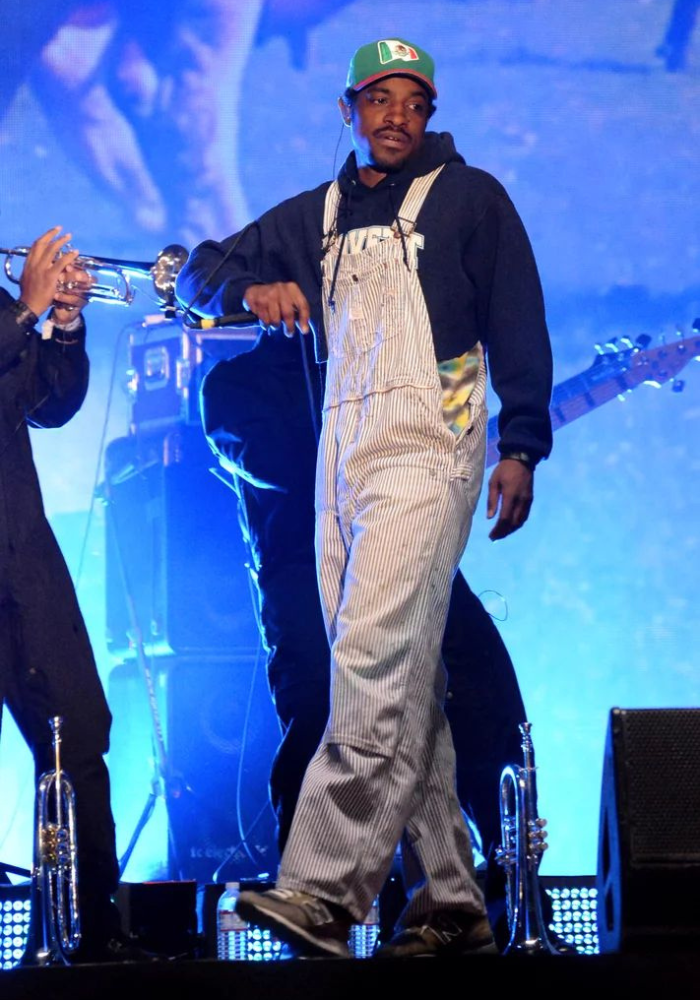
Image Credit: BACKGRID

Image Credit: X.com

Image Credit: X.com

Image Credit: X.com








